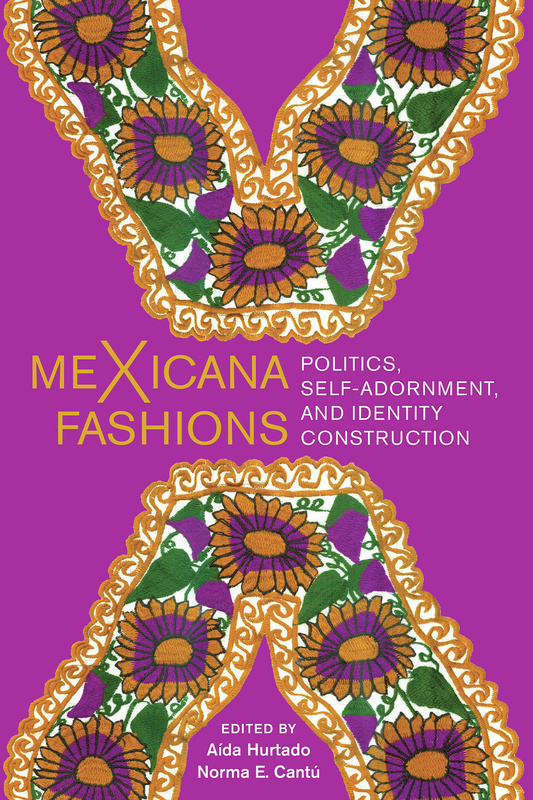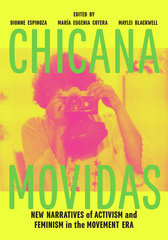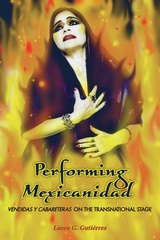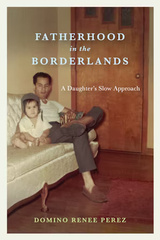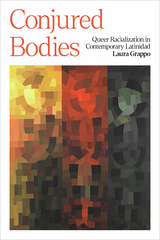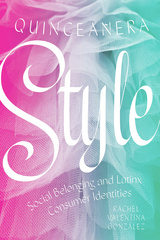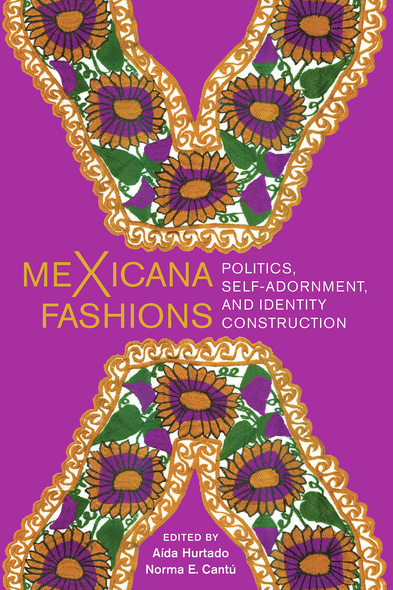
meXicana Fashions
Politics, Self-Adornment, and Identity Construction
2020 Second Place, Best Nonfiction Multi Author, International Latino Book Awards
Collecting the perspectives of scholars who reflect on their own relationships to particular garments, analyze the politics of dress, and examine the role of consumerism and entrepreneurialism in the production of creating and selling a style, meXicana Fashions examines and searches for meaning in these visible, performative aspects of identity.
Focusing primarily on Chicanas but also considering trends connected to other Latin American communities, the authors highlight specific constituencies that are defined by region (“Tejana style,” “L.A. style”), age group (“homie,” “chola”), and social class (marked by haute couture labels such as Carolina Herrera and Oscar de la Renta). The essays acknowledge the complex layers of these styles, which are not mutually exclusive but instead reflect a range of intersections in occupation, origin, personality, sexuality, and fads. Other elements include urban indigenous fashion shows, the shifting quinceañera market, “walking altars” on the Days of the Dead, plus-size clothing, huipiles in the workplace, and dressing in drag. Together, these chapters illuminate the full array of messages woven into a vibrant social fabric.
One of the greatest strengths of this work is its commitment to combatting a tendency toward essentialism in dress studies, particularly for what typically gets deemed 'ethnic,' 'minority,’ or 'subcultural' dress, by underscoring the complex, inconsistent, and sometimes contradictory ways we may experience self and how we variously perform those intersectional identities...The chapters of meXicana Fashions demonstrate many thoughtful attempts to interrogate old and invent new terms, categories, and concepts for identification and analysis...For folklorists, dress scholars, and those interested in material culture, media, and gender studies, there is a lot to value here.
[meXicana Fashions's] editors' intentions of initiating discussion, questioning, and exploration of the significance of fashion, self adornment, and the economics of self fashioning are well served by this diversity of current writings by meXicanas and women of Colour searching for social and self identity outside of the hegemonic fashion industry. This book would be an important point of reference within Mexican American studies and particularly in studies of dress and the creation of both personal and social identity. It is a useful source for complexities of dress, adornment, and the constructions and reconstructions of cultural identities.
This book is a jewel of fashion knowledge and should be a part of every fashion library to learn how clothing can be used for personal identity and more so, a form of respect for society as a whole – a respect through ‘fashion for all’ and one always evolving within our likes and differences. Change is what makes up the ideal of fashion.
[meXicana Fashions] presents the academy with an inspirational model for weaving authenticity and authority alongside the rigors of multimedium and multimethodological research. The result is an insightful and innovate book for those interested in fashion theory, cultural theory, identity politics, textile arts, Latinx/Xicana/Indigenous identity, history, art, and literature, as well as pedagogy.
I have been waiting years for this book...The editors are courageous in their refusal of conformity, even at the level of citation styles, and they appear to model for us what academic diversity can look like in print…the book is a delightful and recommended read.
As I read meXicana Fashions, I thought of my mother—a second-generation thrift store queen seamstress artist—and grandmother—a soft-spoken woman from Monterrey who still loves a velour track suit at age seventy—and of my own color-coded closet filled with rococo ensembles. I felt all of us situated and witnessed, challenged and archived, in these pages. From the politics of donning rebozos to what Stacy I. Macias calls 'racialized rasquache raunch,' this book thoughtfully examines an important array of questions: What is fashion? What does it do? How do we articulate dissent through what we wear? What stories are we telling? Who are we? Where did we come from? But it does more than that. All the contributors bring reverence and affection to this subject as well as to the family members, television characters, historical figures, activists, artists, and colleagues they invite into their chapters. This book is a meXicana 'look' in its own right—fashioning memories and stories from here and there, hybridizing the academic with the vernacular. This book is as much a rigorous examination of the politics of meXicana fashions as it is an homage to the people who give these aesthetics life.
meXicana Fashions makes a unique and compelling argument about the ways in which fashion, self-adornment, and dress contribute to the making of social identities. This wide-ranging and imaginative collection explores the layered border aesthetics of meXicanas across multiple identities, bodies, nationalities, and cultural geographies. In meXicana Fashions, the authors deftly examine the cultural processes enacted in everyday practices of self-adornment and fashion and capture Chicanas’ complicated engagements with the fashion industry. Informed by theories and methodologies of feminist border thinking, mestiza consciousness, and intersectionality, meXicana Fashions explores the complex dynamics of fashion aesthetics at the heart of meXicana creativity and cultural politics of belonging and resistance. An engaging read for anyone interested in border aesthetics and feminist cultural politics!
Readers will find themselves pausing to assess the jewelry that they are wearing or to take a mental stock of what is in their closet. I can’t remember the last time I read something that made me think so profoundly about my own fashion choices and how they’re influenced by generations before me.
meXicana Fashions is a nuanced and essential compendium of essays exploring the landscape of dress and self-adornment in Chicana identity construction. The text explores codes of self-fashioning in street fashion, ethnic dress, and haut couture. The volume defines the complex power of self-presentation and fashion consciousness expressed in the dicho ‘La buena figura, hasta la sepultura.’
Aída Hurtado is a professor and the Luis Leal Endowed Chair in the Department of Chicana and Chicano Studies at the University of California, Santa Barbara. She is the author and editor of numerous books, most recently Beyond Machismo: Intersectional Latino Masculinities.
Norma E. Cantú is the Norine R. and T. Frank Murchison Endowed Professor in Humanities at Trinity University in San Antonio. In addition to pursuing scholarly research in folklore and literary studies, she has published poetry and fiction, including the award-winning Canícula: Snapshots of a Girlhood en la Frontera. Her most recent coedited volume is Entre Guadalupe y Malinche: Tejanas in Literature and Art.
- Introduction (Aída Hurtado and Norma E. Cantú)
- Section I. Rendering of Self: Personal Narratives/Personal Adornment
- Chapter 1. Wearing Identity: Chicanas and Huipiles (Norma E. Cantú)
- Chapter 2. Con el huipil en la mente: The Metamorphosis of a Chicana (Josie Méndez-Negrete)
- Chapter 3. “Rebozos, huipiles, y ¿Qué?”: Chicana Self-Fashioning in the Academy (Micaela Díaz-Sánchez)
- Chapter 4. Por la facha y por el traje, se conoce al personaje: Tales about Attire as Resistance and Performativity in a Chicana’s Life Trajectory (Gabriella Gutiérrez y Muhs)
- Chapter 5. A Familial Legacy of meXicana Style (Domino Renee Perez)
- Section II. The Politics of Dress: Saying It Loud/Saying It Clear
- Chapter 6. Buying the Dream: Relating “Traditional” Dress to Consumer Practices within US Quinceañeras (Rachel Valentina González-Martin)
- Chapter 7. Visuality, Corporality, and Power (Aída Hurtado)
- Chapter 8. Black, Brown, and Fa(t)shionable: The Role of Fat Women of Color in the Rise of Body Positivity (Jade D. Petermon)
- Chapter 9. Fashioning Decolonial Optics: Days of the Dead Walking Altars and Calavera Fashion Shows in Latina/o Los Angeles (Laura Pérez)
- Chapter 10. “Fierce and Fearless”: Dress and Identity in Rigoberto González’s The Mariposa Club (Sonia Alejandra Rodríguez)
- Section III. The Politics of Entrepreneurship: Making (It)/Selling (It))
- Chapter 11. Lydia Mendoza, “Reina de la Música Tejana”: Self-Stylizing Mexicanidad through China Poblana in the US-Mexico Borderlands (Marci R. McMahon)
- Chapter 12. (Ad)Dressing Chicana/Latina Femininities: Consumption, Labor, and the Cultural Politics of Style in Latina Fashion (Stacy I. Macías)
- Chapter 13. Urban Xican/x-Indigenous Fashion Show ARTivism: Experimental Ethnographies and Perform-Antics in Three Actos (Chela Sandoval, Amber Rose González, and Felicia Montes)
- Contributors
- Index

